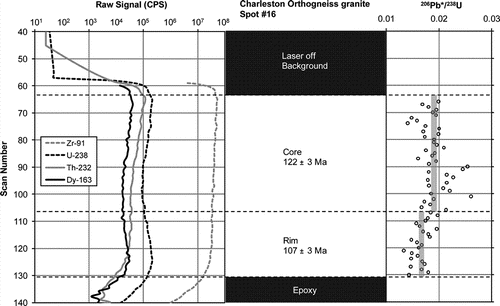Figures & data
Table 1 Key characteristics of relevant granitoid suites (Kimbrough et al. Citation1994; Muir et al. 1994, 1995, 1997, Citation1998; Waight et al. 1997, 1998; Ireland & Gibson 1998; Tulloch & Kimbrough 2003; Bolhar et al. Citation2008; Scott & Palin 2008). Bracketed ages indicate single plutons that are older or younger than most of those comprising a particular suite.
Figure 1 A, Simplified geological map of the Charleston area. B, Photo and digitised field sketch illustrating the intrusive relations between the Doctor Bay dike and Charleston Orthogneiss (this study; Nathan 1975; Kimbrough & Tulloch 1989; Nathan et al. 2002). The diagonal dashed lines on the digitised sketch (B) represent the foliation.
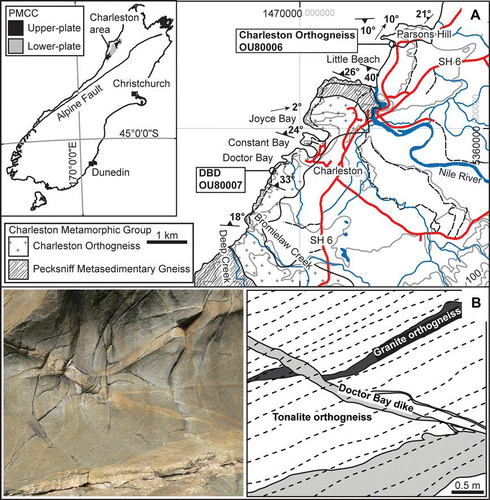
Table 2 Details of the samples reported in this paper. Eastings and northings are in the NZTM coordinate system. Sample number prefix OU indicates the samples are held in the University of Otago, Department of Geology collection.
Figure 2 Charleston Orthogneiss granite (OU80006) zircons. A, CL images. B, C, Probability density plots. D, E, Tera-Wasserburg concordia age diagrams of 238U/206Pb* (* indicates correction for common Pb). The laser pits visible in the CL image are located by the white and black circles (I & G '98: Ireland & Gibson 1998).
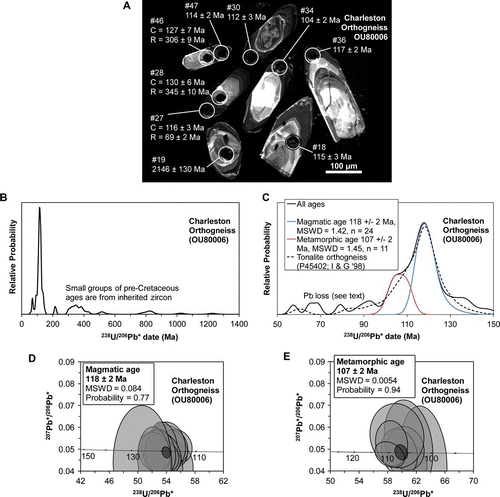
Table 3 U-Th-Pb isotope data for Charleston Orthogneiss (granite) zircon analyses. Pb*: radiogenic component only; italicised dates are those pooled for the metamorphic age; bold italicised dates are those giving the emplacement age.
Figure 3 Atomic Th/U, present-day U, and Th plotted against 238U/206Pb* age of zircon from the Charleston Orthogneiss granite (OU80006). A, Atomic Th/U. B, Present-day U. C, Th (* indicates correction for common Pb).
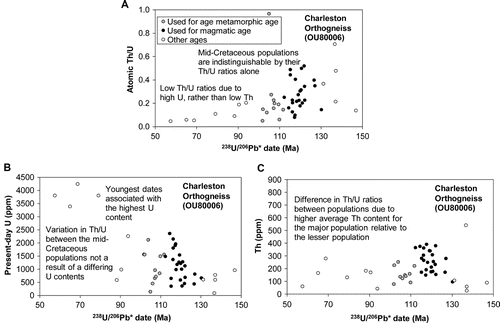
Figure 4 Doctor Bay dike (OU80007) zircons. A, CL images. B, D, Probability density plots. C, Tera-Wasserburg concordia age diagram (* indicates correction for common Pb). The laser pits visible in the CL image are located by the white and black circles.
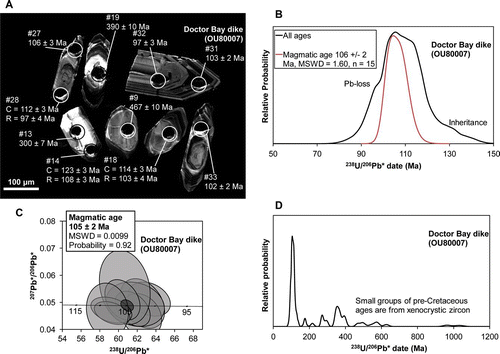
Figure 5 Atomic Th/U and present-day U content against 238U/206Pb* age of DBD (OU80007) zircon. A, Atomic Th/U. B, present-day U. There is a large range in both Th/U ratios and U content (* indicates correction for common Pb).

Table 4 U-Th-Pb isotope data for DBD zircon analyses. Pb*: radiogenic component only; bold italicised dates are those considered for the age.
Figure 6 Whole-rock Harker and REE diagrams for the Charleston Orthogneiss (OU80006) and DBD (OU80007) compared to Cretaceous granitoids west of the Alpine Fault. A, Whole-rock Al2O3-SiO2. B, Whole-rock Na2O-K2O. C, Whole-rock Sr/Y-Y. D, REE diagram (K & T '89: Kimbrough & Tulloch 1989). (Data sources: White Citation1987; Kimbrough & Tulloch 1989; Graham & White 1990; Muir et al. 1995, 1997; Waight et al. 1998; Tulloch & Kimbrough 2003).
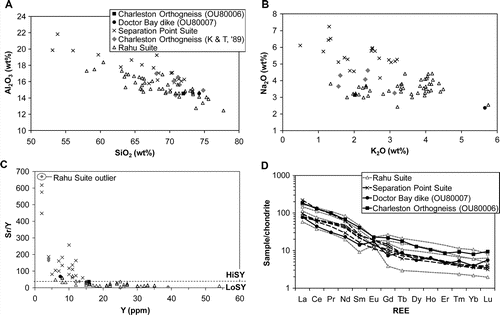
Table 5 Typical major (wt%) and trace (ppm) element composition of the Charleston Orthogneiss (granite) at Little Beach (OU80006) and DBD (OU80007) (ND: not determined). Subscript average indicates the value given is an average of multiple isotopes of that species.
Figure A1 Depth profile of Charleston Orthogneiss spot #16 illustrating correlation between changes in geochemistry and age within a single grain, which is interpreted to indicate zoning.
